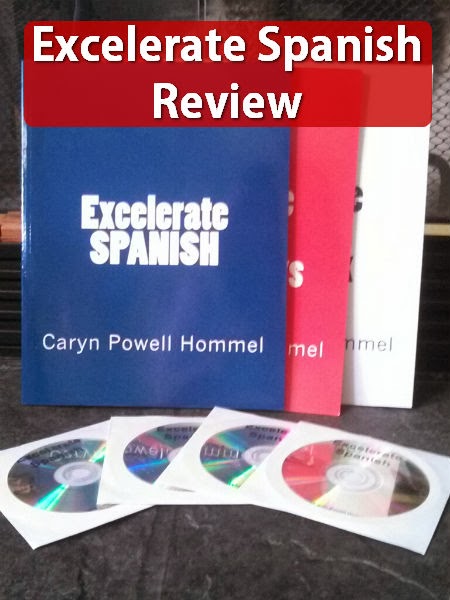
I've always wanted my children to learn a foreign language.
When my grown children were infants and toddlers, I spoke both English and Spanish to them. As the children got older and entered the school system, I strayed away from teaching Spanish and they all forgot everything.
Once we really began the Charlotte Mason method, I started teaching Spanish again. It hasn't been as easy as I thought it would. While interested, Alexis struggled with it because she has a language processing disorder - dyslexia. She struggles to comprehend her native language, let alone another one. Lorelai was OK with Spanish, but could take it or leave it. She didn't have a profound interest in learning it.
So here we are now. What are the kids learning?
Learning Spanish and German in Our Homeschool
(This post contains affiliate links.)A Brief Note about Japanese
I want to make a brief mention that Alexis teaches herself Japanese. We've yet to find an effective, affordable Japanese curriculum.If you know of one, please share it with me.
In the meantime, she's been teaching herself in bits and pieces. I was originally going to share the how-to for this, but realized she didn't have any one set of resources which is why it has been a slow process. She speaks very well and is able to understand a good deal, but still needs a complete program.
How We Study Spanish

Over the years, we've tried several resources for learning Spanish, but nothing really worked. The retention level was low. Very low.
Until last year.
That's when I discovered a Excelerate Spanish. This program actually worked.
This Spanish curriculum allows children to learn Spanish in the same way they learned their first language. They learn...
- by hearing the word and seeing the gestures of the teacher or parent.
- realistic situations and dialogues, dramatizations and stories/skits to teach the children.
Within minutes of popping in the first DVD, Lorelai was following the directions the teacher was giving in Spanish! She picked up on it immediately. I used the words and phrases in our daily activities (see tips below) and found that what she was learning was actually being retained.
I'm a single mom. I need the affordability factor and this program has it.
The entire set costs only $139.00 and although that is a fantastic price for a language program, it may be difficult for some parents to pay at once. The owner understands that and has various options available which make it affordable for pretty much anyone.
Check out the website at Excelerate Spanish for more details.
How We Study German
This is actually a new language for us. Lorelai is beginning 6th grade. I asked her what she wants to do for middle school. Does she want to continue Spanish? Learn something else?It turns out she wants to learn German. This is especially exciting to me because their dad was of German descent. His mom is first generation American. Learn German? Absolutely! It's the language of her people. Well - except for the language of her other people - my family - which would be Irish.
But you get my point.
So what are we using? The truth is, we just started. Literally. We just started a few days ago. I can't give you a review on it yet, but I can tell you that we're using Middlebury Interactive. We're trying out a semester to see how it goes, but I liked what I've seen so far.
(Update: I have written a review on Middlebury Interactive Languages here.)
.png)
Tips for Learning a Foreign Language
1. Use the language. It's not enough to study it, sitting in a room alone with a book or computer program. The language must be used. It's best to do this with a fluent speaker, but even using it in day-to-day life works.
When I teach a child a language, I start using it throughout the day. I'll ask questions in Spanish, for instance, expect the response in Spanish. I'll point to things and ask "How do you say this in Spanish?"
Little by little, the children are speaking more and more of the language in everyday life. (Of course, I'll need to learn in order to do practice German with Lorelai.)
2. Hear the language. Diplomats are fluent in a language in 3 months. They do this by immersing themselves in the language for 5+ hours per day. We can't ask that of an 11-year-old, but there are things that can be done.
The child can...
- use interactive online classes
- learn and sing songs in the language
- learn rhymes
- have conversations
- watch movies in the new language with English subtitles turned on
- listen to music in the new language (think German radio)
3. Choose 100 most common words and learn them. Unfortunately, a lot of foreign language programs teach conjugation of verbs and words that aren't necessarily used every day (aunt, uncle, spatula, pants, shirt). These are necessary words, of course, but they aren't used in a great number of normal everyday conversations.
Unless you're a fashion designer or seamstress, how much are you really talking about los pantalones each day?
Make a list of common things you say all the time and try using them in sentences every day. Put together all sorts of sentences. Use the language.
4. Become conversational. Once the top 100 are mastered, move on to more conversational language.
5. Practice new words. When the child learns a new word, have them use it repeatedly over the next few hours. This will help them retain the word.
Your Turn: What language are your children learning? What are you using? Share in the comments.
That's how we do it in our homeschool.
How do other homeschool families do it?
Read more posts like this one at
Alo, Haelo, Caio, Halo, Ano and More, Foreign Languages for your Homeschool
How do other homeschool families do it?
Read more posts like this one at
Alo, Haelo, Caio, Halo, Ano and More, Foreign Languages for your Homeschool

Need more assistance?
Schedule a consultation today.
Never miss a post! Subscribe here.



Great tips! I have also wanted to as well, and had trouble sticking with it over the years;) My oldest son wants to learn Latin because he likes the roots of words and the history as well. I have tried to encourage Spanish since we live in Southern California!
ReplyDeleteMary at Homegrown Learners is teaching her children Latin. http://www.homegrownlearners.com/home/2014/4/30/how-to-learn-latin.html
DeleteGreat tips! My kids are learning Mandarin with a private tutor and though I have picked up a few phrases, they are way beyond me at this point so they are on their own.
ReplyDeleteThey also want to learn Norwegian and Spanish but we haven't begun earnestly yet.
Nice! Mandarin. That's a difficult language, isn't it?
DeleteHi! We are from Argentina so my daughter is learning English with me and French at Duolingo. My son is not studying a foreign language yet. When my daughter was only one, everybody suggested me to speak English to her but I didn't, I really regret that now.
ReplyDeleteI wish I had stuck with teaching my kids Spanish. In our area, it's a very helpful language. I would imagine that English is very difficult to learn. Are you finding that to be the case?
DeleteDear Michelle,
ReplyDeleteit is so nice to hear that your kids are learning German. It is not easy at all. We have such a lot of grammar. If I can help you out in answering some questions, please feel always free to ask.
Wishing you the best,
Isabelle